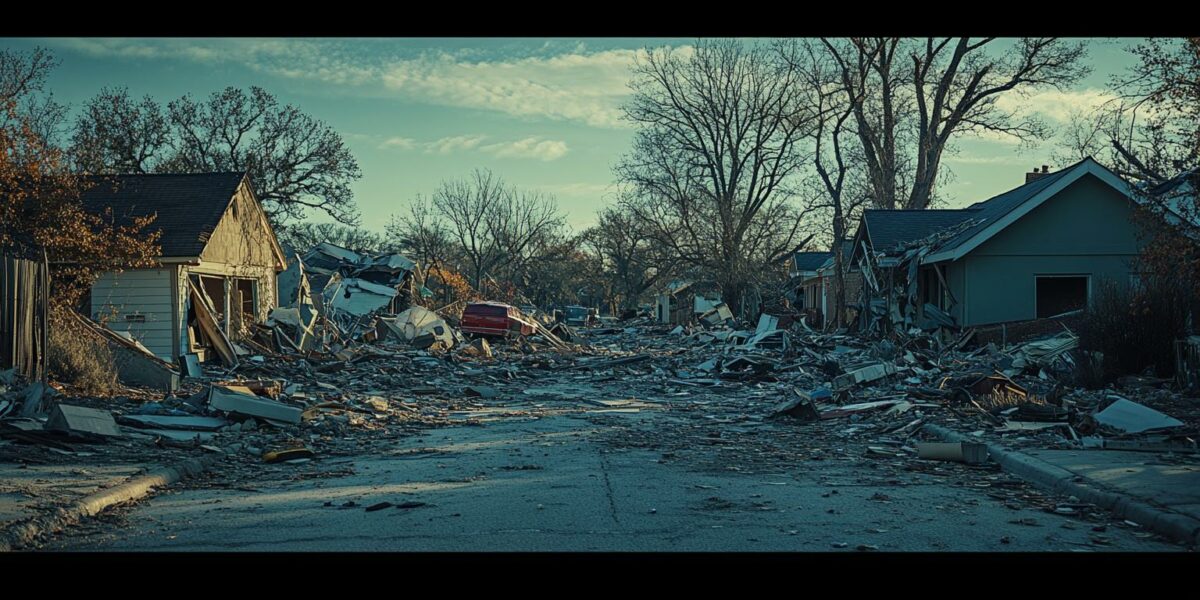Escalating Costs Due to Extreme Weather
The financial burden of extreme weather is intensifying, making property insurance increasingly unaffordable. Recent reports highlight that weather-related damages in Iowa have already reached $550 million this year. With thousands of insurance claims and significant FEMA assistance, the economic impact is undeniable.
Other states are facing even worse scenarios. The west struggles with wildfires, the east with flooding, and coastal regions with hurricanes. This mounting annual property damage is driven by several factors, including climate change and the construction of high-end homes in disaster-prone areas.
Repairing damaged properties is becoming costlier, exacerbating the financial strain. The combination of more frequent extreme weather events and increased rebuilding expenses underscores the urgent need for smarter national planning.
Despite these challenges, there is hope. By adopting more sustainable building practices and improving climate resilience, we can mitigate some of these escalating costs. However, it requires proactive and coordinated efforts at all levels of government and society.
Wildfires, Floods, and Hurricanes: The Trifecta of Destruction
Across the United States, various natural disasters are contributing to the growing financial toll. Wildfires in the west have led to unprecedented levels of destruction, while the east contends with severe flooding. Coastal areas are not spared either, facing relentless hurricanes.
These disasters are not just more frequent but also more intense, causing greater damage and higher repair costs. The trend of building luxurious properties in vulnerable locations further aggravates the situation, leading to unsustainable economic losses.
The financial implications are vast, affecting not only individual property owners but also the broader economy. Insurance companies are raising premiums, making it harder for people to afford coverage. This, in turn, puts more pressure on government assistance programs like FEMA.
Key factors contributing to these escalating costs include:
- More severe and frequent weather events due to climate change
- Increased costs of repairing and rebuilding damaged properties
- Construction of high-value homes in high-risk areas
The Need for Smarter National Planning
Addressing these challenges requires a comprehensive approach to national planning. We must prioritize resilience and sustainability in our building practices and land use policies. By doing so, we can reduce the economic impact of extreme weather events.
Investing in climate adaptation strategies is essential. This includes strengthening infrastructure, enhancing emergency response systems, and promoting community resilience. Such measures can help mitigate the damages and reduce the financial burden on both individuals and the government.
Furthermore, public awareness and education about climate risks are crucial. People need to understand the long-term consequences of building in high-risk areas and the importance of sustainable practices. With informed decision-making, we can create a more resilient and prepared society.
Ultimately, the rising costs of climate change highlight the importance of proactive planning. By taking decisive action now, we can protect our communities, economy, and environment from the escalating impacts of extreme weather.
Conclusion: A Call for Action
The growing financial toll of extreme weather events underscores the need for immediate and effective action. We must adopt smarter national planning strategies to mitigate these costs and enhance our climate resilience. The stakes are high, and the time to act is now.
By prioritizing sustainability and resilience, we can reduce the economic burden on individuals and the government. This requires coordinated efforts at all levels, from local communities to federal agencies. Together, we can build a more prepared and resilient nation.
Public awareness and education play a vital role in this process. People need to understand the risks associated with climate change and the importance of sustainable practices. By making informed decisions, we can create a safer and more resilient future for all.
In conclusion, the escalating costs of climate change demand urgent and comprehensive action. By strengthening our national planning and adaptation strategies, we can protect our communities and ensure a more sustainable future.



LaurenElysium
Goverments should definitely enforce stricter building codes in disaster-prone areas.
sofia
Maybe we should start building houses on stilts everywhere! 😂
BaileyNova
Is there any state that is handling this issue well? Would love to see some positive examples.
jayden_whisperwind
Great article! Thanks for shedding light on this critical issue.
dylan_catalyst
This is so frustrating! When will our leaders wake up and take real action on climate change?
camilaeclipse
How can local governments afford to keep rebuilding in high-risk areas? This seems unsustainable.
BrooklynTempest
Why aren’t we seeing more investment in climate resilience? Seems like a no-brainer to me.
chase
Wow, $550 million in Iowa alone? That’s insane! 😲